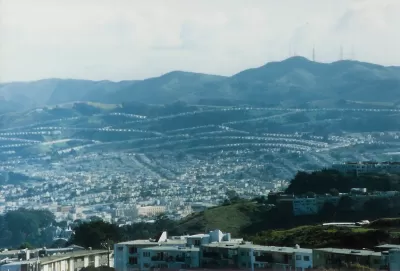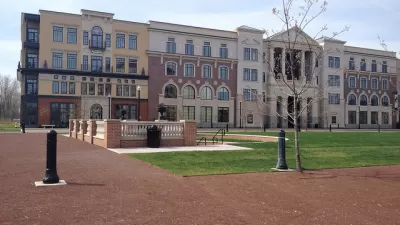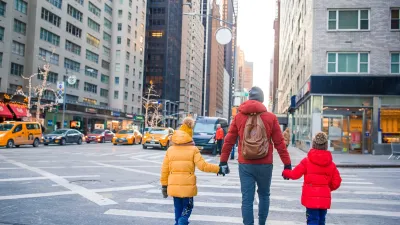A new book about unconventional suburbs challenges the perception that these were socially and racially homogenous places.

In an excerpt from her new book Radical Suburbs, Amanda Kolson Hurley describes various experimental communities that sprung up from the 1820s to the 1960s outside of cities and challenge conventional notions of American suburbs. "These groups had very different backgrounds and motivations, but all of them believed in the power of the local community to shape moral and social values, and in the freedom provided by outskirts land to live and build in new ways."
Hurley says that the perception of suburbs as filled with tracts of cookie-cutter homes where middle-class whites resided is not wrong, but it is a limited understanding of their diversity. Lower-income suburbs existed as did black and integrated suburbs, suburbs based on religious ideology, and suburbs founded by anarchists and socialists.
For Hurley, looking back at the past is important as demographic, social, and economic changes influence the transformation of present-day suburbs. "Heavy-handed zoning and land-use regulations might try to make time stand still, but nothing is predestined about the future of suburbia, where most Americans live. Instead of despairing over the suburbs’ problems, we should be inspired by suburban history to try to solve them."
FULL STORY: The Secret History of the Suburbs

Trump Administration Could Effectively End Housing Voucher Program
Federal officials are eyeing major cuts to the Section 8 program that helps millions of low-income households pay rent.

Planetizen Federal Action Tracker
A weekly monitor of how Trump’s orders and actions are impacting planners and planning in America.

Ken Jennings Launches Transit Web Series
The Jeopardy champ wants you to ride public transit.

California Invests Additional $5M in Electric School Buses
The state wants to electrify all of its school bus fleets by 2035.

Austin Launches $2M Homelessness Prevention Fund
A new grant program from the city’s Homeless Strategy Office will fund rental assistance and supportive services.

Alabama School Forestry Initiative Brings Trees to Schoolyards
Trees can improve physical and mental health for students and commnity members.
Urban Design for Planners 1: Software Tools
This six-course series explores essential urban design concepts using open source software and equips planners with the tools they need to participate fully in the urban design process.
Planning for Universal Design
Learn the tools for implementing Universal Design in planning regulations.
Ada County Highway District
Clanton & Associates, Inc.
Jessamine County Fiscal Court
Institute for Housing and Urban Development Studies (IHS)
City of Grandview
Harvard GSD Executive Education
Toledo-Lucas County Plan Commissions
Salt Lake City
NYU Wagner Graduate School of Public Service




























